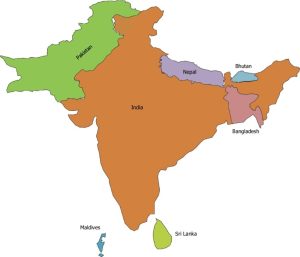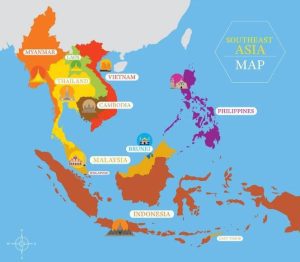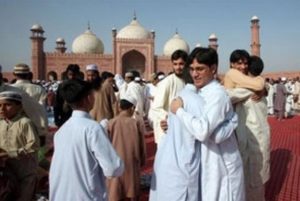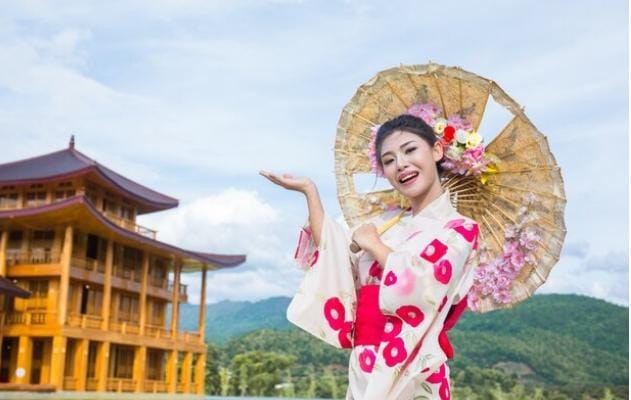The region has 19 countries, 8 in South Asia and 11 in Southeastern Asia. The region’s population as of 2023 is over 2.7 billion: over 2 billion in South Asia and over 685 million in Southeastern Asia.

South and southeastern Asia is very dynamic and culturally rich, making the region perfect for learning more about their greetings and their function in promoting cultural diversity. Understanding and appreciating the greetings in the region is only possible if we do not understand the historical and cultural context that shapes the region’s traditions.
Historically, South and Southeast Asia have been at the center of global trade, cultural exchange, and imperial conquests, shaping the region’s uniqueness. South Asia, for example, is well-known for its ancient civilizations, like the Indus Valley and Vedic cultures. At the same time, Southeast Asia has a rich maritime history, with empires like the Khmer and Srivijaya leaving a legacy.

The region is the origin of major religions such as Hinduism, Buddhism, Islam, Sikhism, and indigenous belief systems. In addition, Christianity has been adopted in the region. This religious diversity adds depth and complexity to the way people greet one another, as customs are often intertwined with religious rituals.
The ethnic groups in the region are so many. South Asia has thousands of ethnicities, including Indo-Aryans, Dravidians, and many indigenous communities. On the other hand, Southeast Asia also features many ethnic groups, like the Malays, Thais, Javanese, etc.
This article will cover South and Southeast Asian greetings, exploring how they reflect the region’s complex history, ethnicity, and religious traditions.
Understanding the Importance of Greetings in Asian Cultures
Customs and traditions, including greetings, have been passed down through generations in Asia. Understanding and practicing these greetings is a sign of cultural appreciation and a way to connect with people on a deeper level.
The Function of Greetings in Social Interactions
Greetings in South and Southeastern Asia is a key factor in social interactions. They vary depending on the context; they can be formal or informal, and the relationship with the individual involved matters. Individuals can better navigate social situations by sticking to societal norms and customs surrounding greetings.
For example, bowing is a standard greeting in countries like Japan and Korea. The depth and duration of the bow can convey different meanings, such as showing respect or expressing gratitude.
In comparison, countries like India and Thailand have greetings that involve joining the palms together in a prayer-like gesture known as “Namaste” or “Wai.” These gestures show respect and acknowledge the divine spark within each individual.
Moreover, greetings in Asian cultures often extend beyond mere words or gestures. They can include offering gifts or sharing a meal. These acts of generosity further strengthen the bond between individuals and create a sense of community.
The Symbols of Different Greetings
Greetings in South and Southeast Asia often have symbols that represent various cultural and religious influences. Hand gestures, verbal expressions, and body language convey messages during greetings. The symbols are important because they reflect deep cultural values such as respect, spirituality, and cultural heritage.
In some Asian cultures, touching someone’s feet is a sign of utmost respect. This gesture is often reserved for elders or revered individuals, symbolizing humility and acknowledging their wisdom.
Similarly, in other cultures, greetings involve the exchange of gifts, which symbolize goodwill, friendship, and the desire for a peaceful relationship.
Moreover, using specific words and phrases during greetings can also carry profound meaning.
South Asian Greetings
India
In India, the traditional greeting of “Namaste” is widely used. This gesture involves pressing the palms together before the chest and bowing slightly. The word “Namaste” has spiritual connotations, symbolizing recognition of the divine spark within each person. It transcends caste, religion, and gender barriers, emphasizing the inherent unity of humanity.

When two individuals greet each other with “Namaste,” it is not merely a superficial exchange of pleasantries. It is a profound acknowledgment of the sacredness that resides within every human being. The gesture is accompanied by a genuine smile and a heartfelt connection, fostering a sense of respect and harmony.
Furthermore, “Namaste” extends beyond a simple greeting. It is often used as a farewell or a way to express gratitude.
Pakistan and Bangladesh
In Pakistan and Bangladesh, greetings typically involve a handshake accompanied by the words “Assalamu Alaikum” or “Salaam.” These Islamic greetings demonstrate the importance of peace and unity within the Muslim community and are used among both friends and strangers.

When Pakistanis and Bangladeshis greet one another, the handshake or hug is not merely perfunctory. It is a sincere gesture of friendship and goodwill. “Assalamu Alaikum” or “Salaam” carries a deeper meaning, conveying a wish for peace and blessings upon the recipient.
These greetings reflect the strong Islamic heritage and cultural values deeply ingrained in Pakistan and Bangladesh’s societies. They serve as a reminder of the importance of fostering harmonious relationships and promoting unity among individuals.
Southeast Asian Greetings
Thailand
In Thailand, the “Wai” is a traditional gesture for greeting, showing respect, and expressing gratitude. It involves placing the palms together prayerfully and bowing the head slightly. The height at which the hands are held and the angle of the bow signify the level of respect being shown.

The Philippines
In the Philippines, a traditional gesture of respect called “Mano” is often used when greeting older family members or people of authority. The gesture involves taking the hand of the older adult and gently pressing it to one’s forehead as a sign of respect and deference.

The Influence of Religion on Greetings
Religion plays a huge role in influencing the greetings of South and Southeast Asia.
Buddhism’s Impact on Greetings
Buddhism, emphasizing compassion and non-materialism, has influenced greetings in Thailand, Nepal, Bhutan, and parts of India. The gestures used during greetings reflect the Buddhist principles of mindfulness, respect, and interconnectedness.
The Influence of Islam on Greetings
Islam, practiced by a significant portion of the population in South and Southeast Asia, particularly in countries like Indonesia, Malaysia, Pakistan, and Bangladesh, profoundly impacts greetings. Islamic greetings emphasize peace, unity, and equality among Muslims, fostering community and brotherhood.
Greetings as a Reflection of Cultural Diversity
How Greetings Showcase Cultural Differences
By observing the various greetings practiced in this region, one can better understand different communities’ distinct cultures, traditions, and values. The gestures, words, and actions involved in greetings often reflect each society’s unique history, beliefs, and norms.
The Role of Greetings in Cultural Preservation and Continuity
Greetings play a crucial role in cultural preservation and continuity. They are a means by which cultural practices and traditions are passed down from generation to generation. By adhering to traditional greetings, communities can maintain their distinct identities and ensure the preservation of their cultural heritage.
Conclusion
Greetings in South and Southeast Asia go beyond mere politeness; they reflect cultural values, beliefs, and traditions. They serve as a bridge between individuals, fostering social interactions and emphasizing the importance of respect and unity. Understanding and appreciating the diverse greetings in this region contribute to a deeper appreciation of the cultural diversity across South and Southeast Asia.




